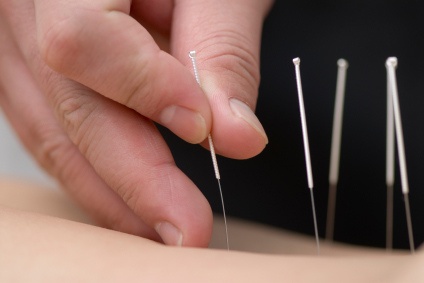Time to realize the true prize
Traditional Korean therapy versus chemotherapy for lung cancer treatment

From self-driving cars to artificial hearts, there seems to be no limit to the technological and medical advancements today. However, the unlimited technology is simply an illusion; a heated issue worldwide—cancer— remains unresolved. Even with the extraordinary technological advances, discovering a cure for cancer is continuously slipping out of the grasp. But, oddly enough, the answer to cancer lies not from the complicated technological advances and modern medicine, but from a simple traditional outlook: Traditional Korean Medicine (TKM).
TKM has its origin in Traditional Chinese Medicine (TCM); however, although both types of medicine utilize the general same techniques of acupuncture and herbal medicines, they are distinctly different. For instance, in Chinese acupuncture, a type of medicine that involves needles, numerous needles across a wider area of the body are inserted whereas in Korean acupuncture, the “four-needle” technique is the standard technique and focuses mainly on a specific part of the body, particularly the hand or ear. The herbs used in herbal medicines are also different, because the plants grown in Korea differ from that of China, so distinctive, cultural, and domestic plants are in TKM.
Cancer research is gaining many criticisms due to its shallow findings despite the excessive amount of funding spent. However, the funds were spent on the wrong researches, diverting from the true direction, blindly missing the answer that lies right before the eyes. Rather than discovering new therapies and medicine, would it not be more reliable to use the treatment that has already existed for centuries?
In comparison to the most commonly used cancer treatment, chemotherapy, the TKM holds substantially greater benefits and advantages. The most controversial issue of chemotherapy is its side effects, which are not limited to hair loss, mouth sores, and loss of appetite, nausea and vomiting, increased chance of infections, fatigue. The majority of cancer patients are undergoing such therapy with grave side effects for a 5-year survival rate that is as low as 2.1%. However, in a case study conducted in South Korea of a man diagnosed with lung cancer was only treated through TKM. With TKM alone, the patient’s tumor shrunk from 55mm to 11mm. Additionally, he showed no side effects, and instead of losing physical strength, he was regaining his original strength—an opposite effect from chemo treatments. The issues for chemo do not end with side effects; the psychological effects during cancer treatment are called “chemo brain,” and recalling names, memories, and common worlds and concentrating problems are just a few examples. Thus, many of these problems of chemo remain unaddressed; not only is chemo a burden on the patient but also his or her family emotionally, as they have to witness the pain and gradual physical degradation of their loved ones from chemo. However, with TKM, none of these problems exist, because there are no known side effects for the lung cancer treatment yet.
Although there are no known side effects of TKM for lung cancer treatment, unfortunately, a skin-related side effect has been shown during a breast cancer treatment. Nonetheless, the patient’s skin was easily treated during her treatment with TKM. In comparison to chemo which has numerous side effects, the single side effect of TKM seems trivial because it was curable. Furthermore, although no known side effects for lung cancer are yet to be found, the rate of side effects for general use of TKM besides the treatment for cancer was merely 8.2 percent while side effects for chemotherapy was an assertive guarantee (Shin). As these case studies prove the potential of TKM, it is necessary that a greater degree of research on treating cancer through TKM alone should be conducted not only in South Korea, but other parts of the world as well. It is also crucial cancer patients as well as doctors are informed of TKM and consider it as an option.
Not only is chemo emotionally, but also a financial burden for many; chemo seems almost a luxury that only financially wealthy families could afford. Although the cost varies widely from each person based on their diagnosis of the disease, the cost for an eight week of chemo can be as high as $30,000, which, for some families is greater than their annual income. On the other hand, herbal medicine for TKM can be as cheap as $10 for a monthly prescription; a drastic contrast between the two types treatments. Thus, with TKM, money is not an issue; even people with low financial statuses have the chance to be treated for cancer. The man was treated for lung cancer through TKM alone was lucky because he was given the option to choose TKM. The man’s initial fear response towards chemo can be generalized to cancer patients—it is a typical response of many cancer victims. Whereas this Korean man was able to resort to a different type of treatment, the TKM, other lung cancer patients unaware of this alternative source are treatment are left to resort to none other but to conventional therapy: radiotherapy and surgery, which also unfortunately have side effects no less severe than that of chemo. Therefore, the use of TKM to treat lung cancer should be promoted to give an additional preference to victims of lung cancer. It is unfortunate for cancer victims to have to decide to receive chemo and other conventional therapies such as radiotherapy and surgery without ever knowing about a treatment that is not as financially burdensome with rare occasions of side effects that are curable.
Only a simple logic is necessary to realize how great TKM is. Although researchers in South Korea had recently found the potentiality for TKM alone to treat cancer, despite the short amount of time TKM was able to produce favorable, positive results, whereas chemo, which has been around for almost eight decades shown disappointing results as issues remain unaddressed. Surprisingly, however, TKM was used as a cancer treatment long before chemo was ever discovered. Because cancer cases were rare back then, TKM did not get the spotlight as a potential cancer treatment. Nevertheless, since traditional medicine has been around for so much longer and it is still in practice today as a medical treatment, it is high in reliability, and thus should be used more as a type of treatment. Instead of relying on a fairly new treatment that is costly with grave side effects compared to the traditional treatment that was discovered centuries ago, doctors and researchers need to consider and rely more on the traditional ways for treating cancer as TKM has proven its potential.
TKM is gaining worldwide recognition as it is increasingly used in conventional therapy such as chemotherapy and radiotherapy. Unfortunately, however, because the idea to use TKM alone to treat cancer has been a recent, new proposal, not many researches have been conducted. But researchers and physicians are missing the grand prize that within their grasp, as TKM may prove to be the next global treatment and possibly a cure for cancer at last. Therefore, countries around the world, not just South Korea, should cooperate to conduct more researches on the effectiveness of TKM alone to treat cancer. Nevertheless, people should still be informed about TKM about its potential and primary source of treatment and as a type of complementary treatment with contemporary therapy.
Any logical person should be able to realize the great potential and how the benefits of TKM far outweigh the consequences of chemotherapy. In all aspects, such as side effects and financial, TKM would result in a drop of emotional, psychological, and financial stress for not only the cancer victim but his or her family members as well. Thus, it is finally the time to realize the prize that has been present for centuries and to promote researches worldwide towards TKM, a highly effective potential treatment and possibly a cure for cancer.





Grace Kang | Jun 11, 2017 at 7:28 pm
This is pretty interesting. My opinion of TKM was lowered recently after getting acupuncture for months and witnessing little change, but it’s true that I didn’t experience any negative side effects. I didn’t know that TKM has the potential to treat cancer patients. Considering my own experience and what I’ve read in your article, I think it’s definitely worth putting in more research.
Emilie Cheng | Jun 11, 2017 at 7:16 pm
Your article provides a very interesting and innovative perspective on cancer treatment. I personally did not know that traditional medicines, specifically ones focusing on acupuncture, could be so powerful. I think TKM is indeed a very lucrative and, if successful, an excellent side-effect-free alternative to expensive conventional cancer treatments. However, my concern lies in the lack of trials wih this treatment. Every patient is different and I personally know that acupuncture alone heavily depends on the brain and its responses–which could differ for every person. If that could somehow be fixed, and the researched is streamlined, then this could likely be out future! Your paper is very well written and researched, with a refreshing perspective on technologized medicine. Well done!
Amanda | Jun 11, 2017 at 5:39 pm
I’ve never even heard of using traditional medicines to treat cancer before. I’ve always been told that treatments like chemotherapy are the most effective in getting rid of cancer.
Alex Wang | Jun 11, 2017 at 5:19 pm
Your opinion on this issue is extremely pertinent given that lung cancer is presently the leading cause of death among cancers in the US, while cancer itself is a leading cause of death worldwide. Moreover, your article offers distinctive insight regarding the treatment of cancer, proposing an alternative to chemotherapy, which is perhaps the most established (albeit imperfect) treatment option for cancer in the US. I feel that in many ways TKM offers a more effective approach to treating cancer than chemotherapy, especially regarding TKM’s lack of harmful side effects. However, I would want to know about additional instances where TKM successfully treated cancer and understand how TKM treats cancer before being more convinced that TKM could potentially treat cancer better than chemotherapy. Still, I think more research should be conducted on this subject and that doctors worldwide should consider treating cancer patients using TKM.
Jenny Wong | Jun 11, 2017 at 4:23 pm
WOW I didn’t know that medicine had been this advanced to the point near cancer treatment. I fully agree with you that it is time to change the way we think and head towards a new direction as money is being spent needlessly on the same thing that barely show any improvement. Looking at new ways to cure cancer could not only save more lives, but save more money in different areas of health research as most of the money spent for research is focused on cancer, while the other health problems are not as recognized.